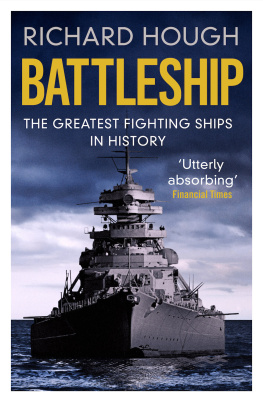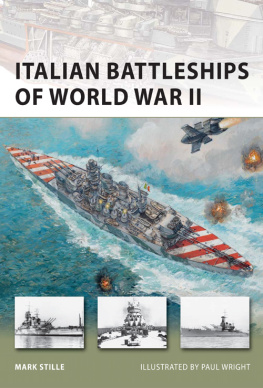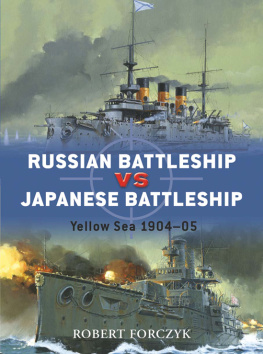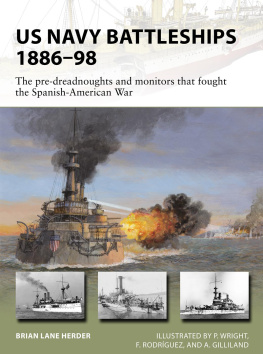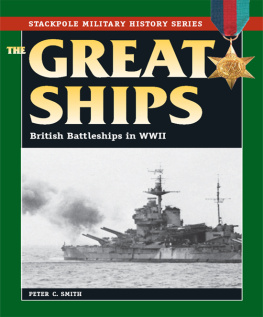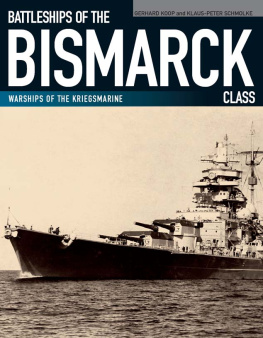Introduction
This book is about battleships, or more specifically, what battleships meant to the world.
The steel battle ship began to emerge as a type in the second half of the nineteenth century, as steam and iron replaced sail and wood, and advances in gunnery technology made possible the construction of heavy, breechloaded turret guns. By the early 1890s, the pre-dreadnought battleship had taken shape. These ships typically displaced over 13,000 tons, and carried a mixed armament built around two heavy twin gun turrets, one fore and one aft. Variations on this type spread across the globe quickly, with most of the major naval powers adopting the template (allowing for some regional variation). The pre-dreadnought competed, for a time, with the armored cruiser, which carried lighter guns on a similar displacement but could make greater speed.
Two events in 1905 threw the battleship world into disarray. In May, Admiral Togo Heihachiro, leading a fleet of four battleships and several armored cruisers, utterly destroyed a larger Russian battlefleet at Tsushima. The battle, involving ships of recent vintage, demonstrated the effectiveness of the combination of speed and heavy gunnery. Togo had showed that a battle squadron, correctly employed, could destroy a vast store of national wealth and power in just a few hours. New battleships would incorporate the lessons of Tsushima, carrying heavier armaments optimized for long-range engagements. Designers and strategists took note.
In October, the Royal Navy laid down HMS Dreadnought , the first battleship equipped with a single caliber main armament in multiple turrets. Dreadnought carried ten 12 guns in five turrets, and could make 21 knots. At the insistence of First Sea Lord John Jacky Fisher, the builders finished Dreadnought in a year. Although the Japanese and Americans had already begun work along similar lines, the example electrified naval architects and strategic thinkers around the world.
The great battleship race had begun. It would continue, in one form or another, until the commissioning of HMS Vanguard in 1946. The race would consume enormous resources worldwide, as great and small powers competed with one another in number, size, and sophistication of battleships. Paused for World War One, the race would eventually lead to a landmark arms control negotiation, as well as a redefinition of the nature of naval power. Along the way, scores of graceful, powerful warships would move from slip to sea, and eventually to scrapyard (the lucky ones, anyway).
Purpose of this book
This book focuses on the strategic and political relevance of the castles of steel that so many nations built in the first half of the twentieth century. Battleships represented a tremendous investment of state resources, sometimes to the extent of bankrupting national coffers for an extended period. Unsurprisingly, the names that governments give them reflect national priorities, and sometimes intra-national conflicts. Consequently, each entry includes a discussion of how the ship acquired its name, and what that name meant to the nation (and navy) at the time.

USS Oregon, October 12, 1898.
The entries also attempt to convey the strategic problems the ship in question was intended to solve. Governments dont commit massive investments to weapons for no reason, even if the primary reasons may sometimes elude us. Governments often bought battleships in the expectation that they would fight other battleships. In other cases, they were expected to fight cruisers, or escort aircraft carriers, or show the flag, or demonstrate that the nation in question was a major international player.
The book does not focus on the technical aspects of the worlds battleships. Many other volumes already do this. Instead, the narratives discuss how the ships related to contemporaries, as well as to past and future battleships. Each entry also includes a brief stat bloc that gives the basic facts, including displacement, weaponry, and dates of construction, reconstruction, and loss. These stats reflect the original condition of the ships, before any modifications and reconstructions. While this book acknowledges and explores the distinctions between pre-dreadnoughts, dreadnoughts, battlecruisers, super-dreadnoughts, and fast battleships, it generally uses the catch-all term battleship in reference to all of them.
How to Read This Book
This book includes more than sixty entries, each devoted to a particular battleship. While the book concentrates on the dreadnought era, it includes several pre-dreadnoughts, one post dreadnought, and a couple of battleships that were converted to aircraft carriers.
The selection of ships is simultaneously systematic and idiosyncratic. Every country to own a battleship received at least one entry (in a couple cases, the entry completely exhausts that nations battleship fleet). The rest of the choices include ships that had remarkable stories, or that had a major effect on naval architecture, or that took unusual names, or that had particularly profound national meaning. The length of entries is less reflective of the historical importance of a battleship than it is of how the interesting story of that ships career was.
In addition to the ship entries, the book includes three interlude chapters focused on events that affected a great number of battleships: the Battle of Jutland, the Pearl Harbor attack, and the impact of the interwar naval limitation treaties. Each of these events had an outsized effect on battleship construction, design, and employment.
The reader, and especially the reader new to the history of the battleship form, should feel free to abandon the chronological ordering and wander across entries of interest. Each entry tells its own story, but the stories of different ships are inextricably interwoven with one another. Readers will find some repetition with respect to historical, legal, and technical developments, as these events rarely had uniform effect across ships and nations. Often, the reader will find two sides of the same battle.
Origins of this book
This volume does not use scholarly standards of evidence or citation, although I hope that it will spark interest for future scholars of these great vessels. The book draws upon some scholarly work on battleships (and includes an extensive reading list), but does not include exhaustive citation of the scholarly or technical literature on battleship employment and construction. My own scholarly work touches upon how the interest in battleship construction and ownership spread across the globe in the early twentieth century, but that investigation is only tangential to the entries in this volume.
The foundations for the book were laid in 2006, when I began the series Sunday Battleship Blogging at the group blog Lawyers, Guns, and Money (lawyersgunsmoneyblog.com). The series began with HIJMS Mutsu , a Nagato class battleship that exploded and sank while at anchor in 1943 ( Mutsu and a very few others didnt make the cut in this volume). It continued for over a year, developing entries at greater length before finally concluding with USS Wisconsin . Most of the entries in this book represent substantial revisions of those early efforts. Elements of the book draw on other posts at Lawyers, Guns, and Money, as well as writing originally published at the Diplomat: APAC, War is Boring, and the National Interest.





